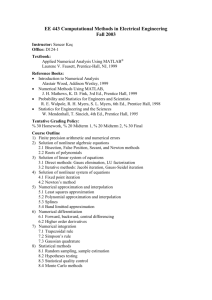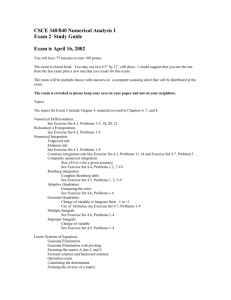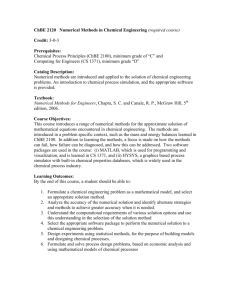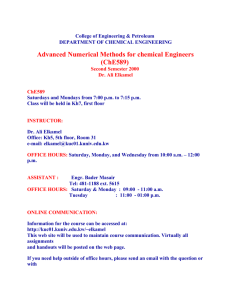Numerical Analysis
advertisement
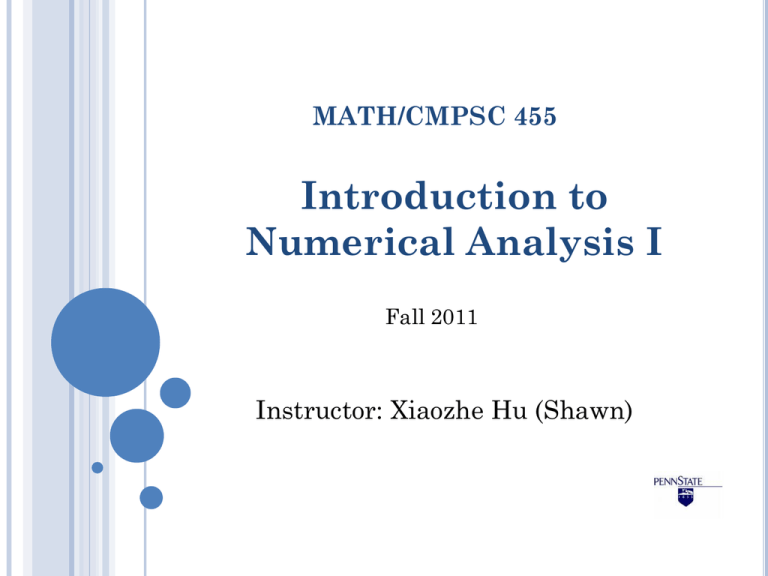
MATH/CMPSC 455 Introduction to Numerical Analysis I Fall 2011 Instructor: Xiaozhe Hu (Shawn) WHAT IS NUMERICAL ANALYSIS? “It is the study of algorithms that use numerical approximation for the problem of mathematical analysis” ---- Wikipedia study of algorithms: Create, analyze, and implement algorithms numerical approximation: Solving problems numerically and approximately mathematical analysis: Problems of continuous mathematics. Such problems originate generally from real-world applications of algebra, geometry and calculus, and they involve variables which vary continuously. A EXAMPLE: Algorithm: This is known as the “Babylonian method”, which is about 3600~3800 years old (1800-1600 BC). Question: Why this algorithm works? FIELD OF NUMERICAL ANALYSIS Numerical linear and nonlinear algebra: solution of systems of linear and nonlinear equations, possible with a very large number of variables Approximation Theory: approximation of functions and methods based on using such approximations Solving differential and integral equations: Effects of computer hardware COURSE BRIEF DESCRIPTION This course is an introduction to basic and classical numerical algorithms. We will describe numerical algorithms for floating point computation, rootfinding, solving linear systems, interpolation and quadrature. We will also discuss the underlying mathematical principles and theories of these numerical methods and their implementations. TENTATIVE OUTLINE Fundamentals 1) 2) 3) 4) 5) (Chapter 0) Introduction Evaluating a Polynomial Binary Numbers (0,1) Floating Point Representation Loss of Significance TENTATIVE OUTLINE Solving Equations (Chapter 1) Bisection Method 2) Fix Point Iteration 3) Newton's Method 4) Secant Method 1) TENTATIVE OUTLINE TENTATIVE OUTLINE System 1) 2) 3) 4) 5) of Equations (Chapter 2) Gaussian Elimination LU Factorization Linear Iterative Methods Conjugate Gradient Method System of Nonlinear Equations TENTATIVE OUTLINE Interpolation (Chapter 3) Lagrange Interpolation 2) Cubic Splines 3) Bezier Curves 1) TENTATIVE OUTLINE Numerical Integration (Chapter 5) Newton-Cotes Formulas 2) Romberg Integration 3) Adaptive Quadrature 4) Gaussian Quadrature 1) Course Text: Numerical Analysis, Timothy Sauer, Addison Wesley Office Hours: Tuesday & Thursday 1:30 – 2:30 pm, or by appointment Grading Policy: 1. Homework & Computer assignments (50%) 2. Midterm exam (20%) 3. Final Exam (30%)
